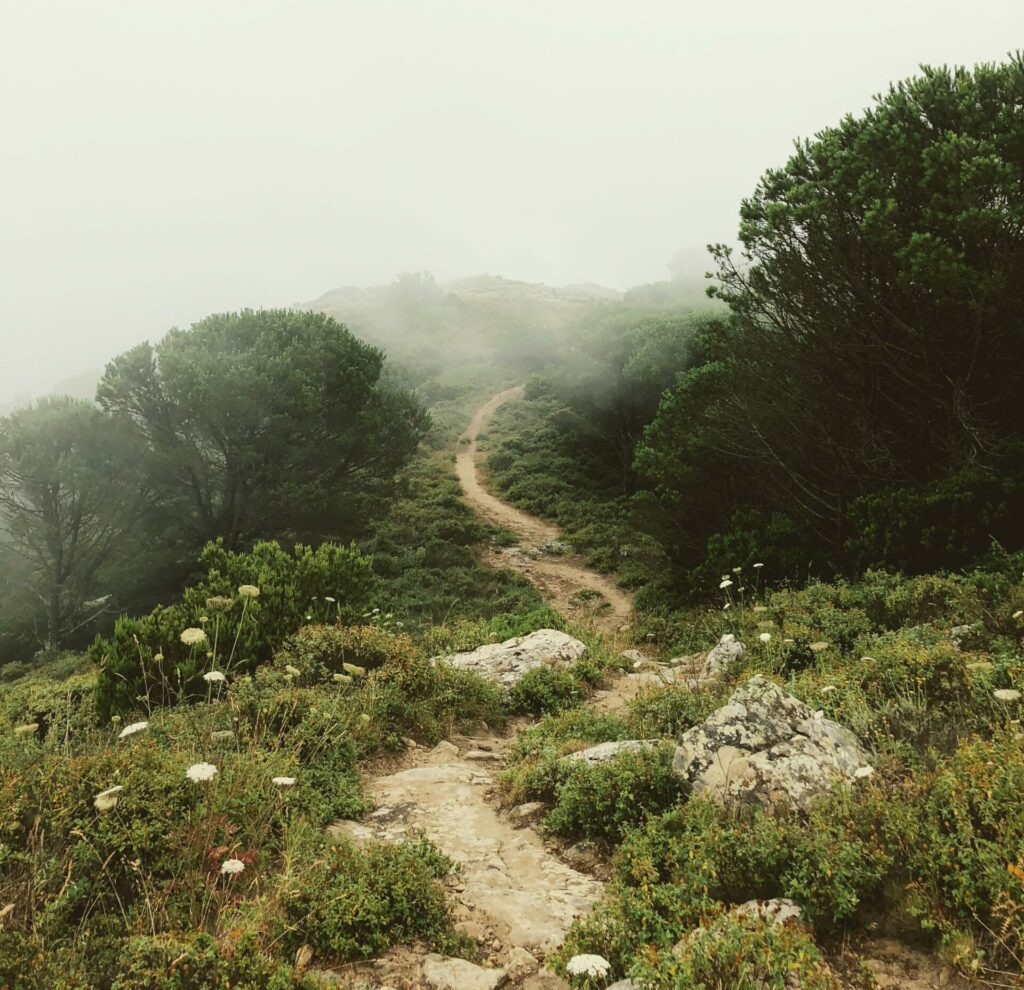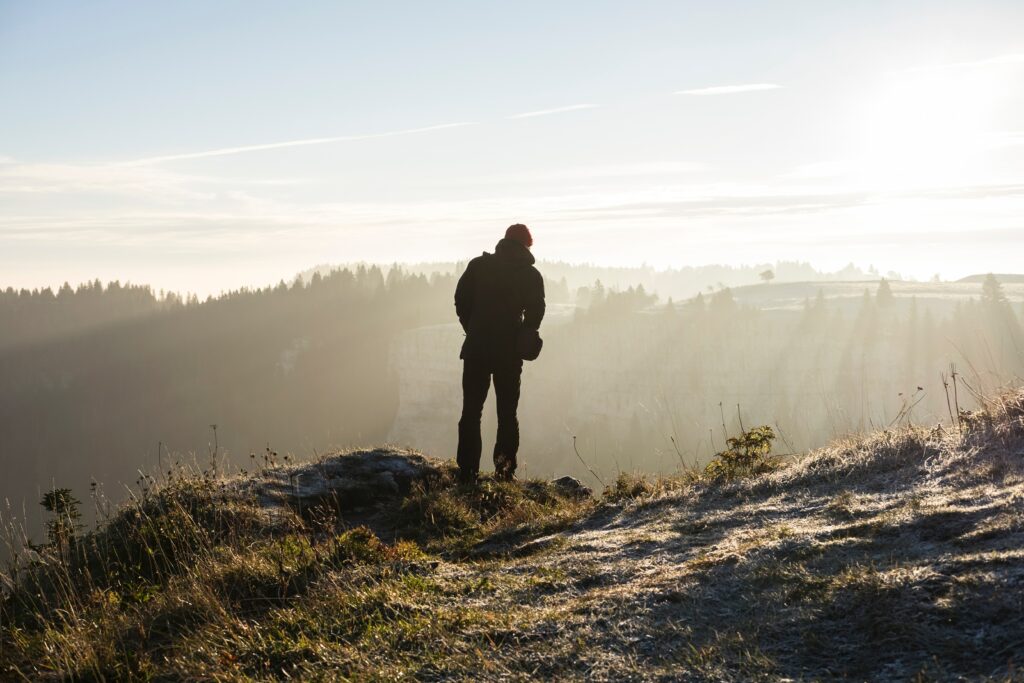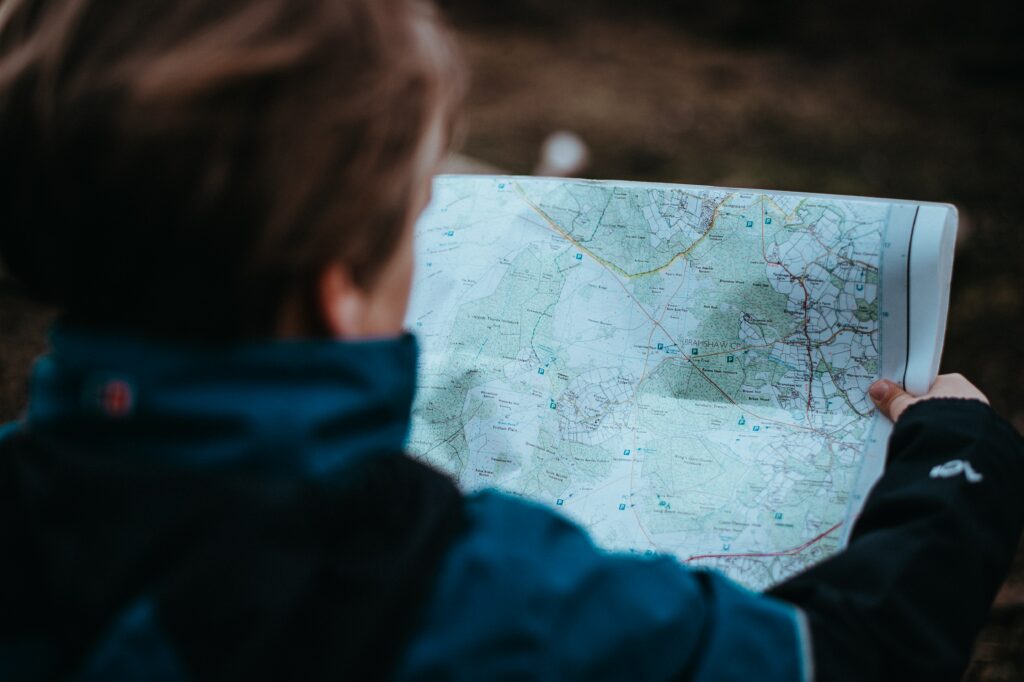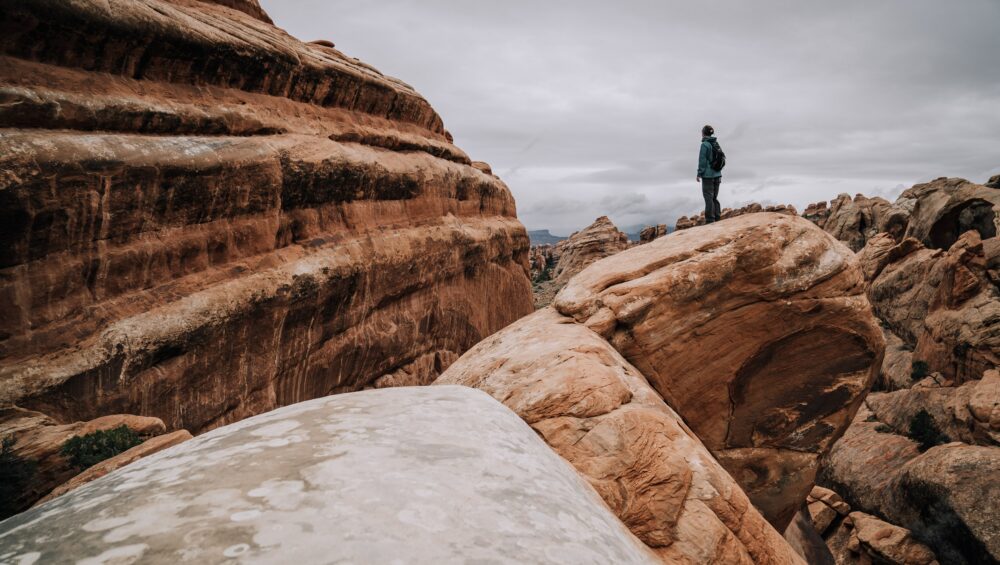The best hikes may feel like a carefree walk through the woods, but it is important to be prepared and stay sharp anytime you go hiking. Losing yourself in your thoughts could cause you to actually get lost. That is why it is important to know what to do if you get lost hiking. We will go over hiking safety and how to get yourself out of a sticky situation on the trail.

Hiking Safety: Before You Go
Anytime you go hiking, you should plan your route in advance and be sure to bring a physical map and a compass. It is easy to overlook these elements since cell phones have this information. However, you may not have service, your battery could die, or you could lose or damage your phone. It is essential to have a form of old-school navigation, so you do not have to rely on technology for your safety. If you are not able to find a physical map, you can take a photo on your phone of the map at the trailhead. Also, try to memorize your route, including the color trails and turning points.
Pack for Safety
In addition to navigation, there are a few hiking safety essentials you should always have in your day pack. Be sure to carry a flashlight, matches, emergency shelter, and extra food and water. You never hope to be stuck on the trail longer than expected, but it could happen. If you get lost, you will be glad to have this gear to keep you safe overnight. An easy emergency shelter to carry would be a tarp and rope. Ready shelters like emergency tents are very affordable, pack light, and can be lifesaving. Especially if you are hiking in cold weather, it is essential to have at least an emergency blanket to stay warm and safe when hiking in winter.
Be Smart when Hiking Solo
If you are planning to hike alone, there are a few more important steps to take before you leave. If you are wondering if it is safe to hike alone, you will feel better once you’ve taken these precautions to protect yourself. The most essential thing is to tell someone where you are going. You can send a loved one your planned route or even give them access to Find my Friend. Sharing your location this way is not a perfect solution if your phone dies or loses service, but it can be a start if someone needs to find you. You should also let them know when you plan to be back and then check in when you finish your hike.
When hiking solo, it is even more important to plan in advance. Check the weather and make sure you will not be caught unaware. Choose a route that leaves you plenty of daylight left. You may decide to start small with easier routes that are well-populated. While it is nice to push yourself on a hike, make sure you know your limits and will not be left totally exhausted. Getting back to the trailhead with a little energy left over is safer than the alternative.

How to Avoid Getting Lost on a Hike
There are a few helpful hints that can keep you safe while on trail. First, plan your route in advance and keep an eye on trail markers, so you stay on the right path. Usually, trail markers will be colored portions of trees, a bit higher than eye level, or signposts at turn-off points. Depending on the trail, markers may be close enough to see two at a time or farther apart but less than a quarter mile. You should note when you see one, either by time or mileage. This way, you can be watchful that you do not continue hiking too far if you haven’t seen one in a while.
Anytime you come to a fork in the trail, it is important to take a second and think about the path you had in mind. Note some landmarks like nearby rocks or trees that will help you recognize the turn on your trip back. You can even take photos, build your own cairn with rocks, or set a couple of sticks as arrows. When you make your return, be sure to dismantle these, so you leave no trace.
What to Do If You Get Lost Hiking
When you realize you are lost on the trail, just remember the acronym STOP. You need to stop walking, think, observe your surroundings, and plan. With these four actions, you can get yourself back on track and make sure you get out safely.
Step One: Stop
The S conveniently stands for stop. The first thing to do is stop walking so you can assess. Make sure to breathe and maintain your calm. It is essential that you not panic. While it is a normal reaction, you need to be able to keep your head clear and figure out what to do. You can practice breathing exercises to keep your system calm. Take a second to rest, have a snack and some water, and then get to work.
Step Two: Think
The T stands for Think. Try to retrace your steps in your mind. Did you miss a turn? Is there a landmark you remember seeing that you need to look out for? It is essential that you do not keep walking until you have a plan. Take a look at your watch and guess where you expected to be at this point. Should you be circling back by now? Are you not quite to the next turn?
Step Three: Observe
Take a look around and see if you can spot any signage on a post or a tree. You may find someone else’s cairn on the ground or any sign of development like logs used for trail sides or steps. If you are able to figure out what trail you are on, take a look at your map. You might be able to figure out approximately where you are based on where you meant to be and what is around you. Be sure to look further into the distance, too. If the map shows that the trail increases in elevation or curves around a lake, look around to see if you can match these features with the world around you.
Step Four: Plan
When you realize you are lost, there is one decision to be made. Do you turn around and try to retrace your steps or keep going and try to reconnect with a new trail? Depending on how far you have walked already, it may not make sense to turn around. You should also consider the time of day and how you are feeling. If it is late or you are injured or exhausted, you may choose to take a rest or set up a shelter for the night. If you were with a group who will notice your absence, it is always best to stay put and wait to be found.

How to Find a Trail If You Get Lost While Hiking
If you decide to keep walking, there are a few key things to keep in mind that can help direct your path. It can be a good decision to follow a stream or drainage downhill. This may end up leading to a road or trail; however, this could also be difficult and dangerous. If you think you see a road or river in the distance, but there is a steep slope in your way, do not attempt to hike something dangerous. Instead, avoid injury and follow the landmark from a distance.
When you are hiking while lost, you need to remember to take care of yourself. It will be exhausting and stressful to hike longer than expected. Be sure to rest early and often and keep your energy up with snacks and hydration. You should avoid walking in the middle of the day if it is hot out as you do not want to risk dehydration or sunstroke. Be sure to rest in the shade and keep your eyes peeled for signs of a trail.
How to Set Up An Emergency Shelter When Lost on a Hike
There are a lot of circumstances in which it might make sense to set up camp for the night and find your way home in the morning. If you are feeling tired or if you get injured, it is important to rest so you are in your best shape for the hike back. You do not want to keep hiking and risk injury or get yourself more lost because you are not thinking straight.
If it is starting to get dark, you should find a place to set up camp. Hiking in the dark is dangerous, as you are likely to miss important markers and could encounter nocturnal animals. Instead, try to find a natural shelter like a rock outcropping or stand of trees. This natural protection can keep you sheltered from wind and rain during the night.
Lastly, if you get lost while hiking with a group or on a guided tour, it is better to stay in one place and wait for them to find you. You do not need to worry that people don’t know you are missing. Therefore, you do not need to find your way back on your own. If both you and your search party keep walking, you run the risk of getting more lost. Instead, set up camp and relax. It is easier for others to find you if you stay put and make a fire or use something bright as a flag.
Final Thoughts
Even avid hikers may find themselves slightly disoriented at times. Less popular trails and parks may not be well maintained, and markers can be confusing, vandalized, or altogether missing. The most important thing to do if you get lost hiking is to stay calm and remember the acronym STOP. With these helpful tips, you should be able to get your bearings and finish your fun hike with no further issues. Stay safe, and happy hiking!

